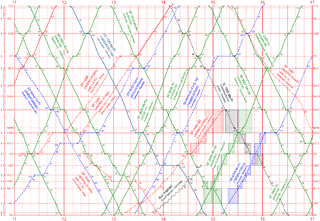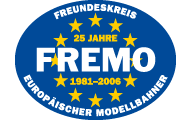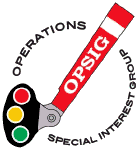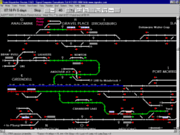Links
Links
- Details
- Kategorie: Links
- Zuletzt aktualisiert: Donnerstag, 24. August 2017 08:39
- Geschrieben von Michael Homberg
Links
These are links that are important ones for the topic of this website, and are used by me. In most cases you will find comments, too.
Hier finden Sie Links, die zum Thema dieser WebSite passen, und die ich selber benutze. In vielen Fällen finden Sie auch persönliche Kommentare.
Kategorien:
- Maps of Railroads + Railways / Karte mit den Eisenbahnen der Welt
- Europäische Eisenbahn - Modelle
- Europäische Eisenbahnen
- American Railroad - Models
- American Railroads
- Industries along the Railroads / Industrien entlang der Eisenbahn
- Planung eines Eisenbahn-Modells / Planning of a Railroad-Model
- Software
- Organisationen
Maps of Railroads + Railways / Karte mit den Eisenbahnen der Welt
OpenRailwayMap
Worldwide Map of Railways, active ones and abandoned
Weitweiter Karte von Einsenbahnstrecken, aktiv und aufgegebene
Europäische Eisenbahn - Modelle
 Braunlage-Andreasberger-Eisenbahn
Braunlage-Andreasberger-Eisenbahn
Die BAE ist eine Modellbahn, die eine fiktive Schmalspurbahn im Harz, die mit den realen Harzer Schmalspurstrecken Verbindung hat, darstellt. Die Baugröße ist 0m, das heißt Meterspur im Maßstab 1:45; die konkrete Spurweite ist 22,2 mm.
Die BAE wird von Otto O. Kurbjuweit (den Insidern als OOK bekannt, dem Initiator und Gründer des FREMO) und dem BAE-Club erbaut.
Europäische Eisenbahnen
Daten, Fakten und Dokumente zur DRG Deutsche Reichsbahn-Gesellschaft
Umfangreiche Sammlung der Hochschule Merseburg (FH):
Alle Dokumente werden im unkommentierten Volltext wiedergegeben. Es sind keine Änderungen oder Ergänzungen vorgenommen worden. Eventuelle geringfügige Kürzungen werden ausdrücklich angegeben. Die zugehörigen Anhänge und Anlagen werden in allen Fällen erwähnt, werden aber nicht immer mit dargestellt.
Eisenbahnfotografie, u. a. Deutschland, Albanien, Marrokko, Hedschasbahn, Syrien, Libanon, Indien, Korsika, Sardinien, USA, Parkistan, Italien, Rhätische Bahn
Ich finde es sehenswert, vieles ist in edlem Schwarzweiß, von Thomas Becker.
Videos von europäischen Zügen, vor allem Dänemark
Videos of European tranis, mostly from Denmark
by Jens Ehlers, Kolding, Danmark
http://www.youtube.com/user/JeKd100
Danish Signaling, an introduction, by Carsten S. Lundsten:
The list of documents describing Danish contemporary signaling is growing. The goal is to provide documents explaining most topics from two angles; by signal type and by examples of usage. Below are links to existing documents. Planned documents are listed as well. Revision History Documents are gradually being added. These can be accessed through the links on the Revision Date in the table below or in the document in question.
American Railroad - Models

americaN - Website:
 You are interested in US-American and Canadian railroading??? You like prototypical operation instead of running around in circles??? You want to show your modelling skills in handsome modules??? If so, you are right here!!!We are a group in the FREMO (Friendscircle of European Modelrailroaders). Our modules resemble single-track standard gauge railroad lines in North America in N-scale (1:160). On the following pages you can find information about our modules and our operation concept.
You are interested in US-American and Canadian railroading??? You like prototypical operation instead of running around in circles??? You want to show your modelling skills in handsome modules??? If so, you are right here!!!We are a group in the FREMO (Friendscircle of European Modelrailroaders). Our modules resemble single-track standard gauge railroad lines in North America in N-scale (1:160). On the following pages you can find information about our modules and our operation concept.
 Sie haben Interesse an US-amerikanischen und kanadischen Eisenbahnen??? Sie möchten vorbildorientierten Betrieb mit vielen Mitspielern machen anstatt im Kreis zu fahren??? Sie wollen Ihre modellbauerischen Fähigkeiten in überschaubaren Modulen darstellen??? Dann sind Sie bei uns richtig!!! Wir sind eine Gruppierung innerhalb des FREMO, die sich dem Bau von Modulen nach nordamerikanischem Vorbild im Maßstab 1:160 verschrieben hat.
Sie haben Interesse an US-amerikanischen und kanadischen Eisenbahnen??? Sie möchten vorbildorientierten Betrieb mit vielen Mitspielern machen anstatt im Kreis zu fahren??? Sie wollen Ihre modellbauerischen Fähigkeiten in überschaubaren Modulen darstellen??? Dann sind Sie bei uns richtig!!! Wir sind eine Gruppierung innerhalb des FREMO, die sich dem Bau von Modulen nach nordamerikanischem Vorbild im Maßstab 1:160 verschrieben hat.
The Model Railroad Club, Inc. ™
at the A. Paul Mallery Model Railroad Center
"Welcome to one of the oldest Model Railroad clubs in the USA. Founded in Murray Hill, NJ by inventor and NMRA Master Modeler (#4) Paul Mallery and three other gentlemen in 1949, we subsequently moved to our present site in 1974 and are now part of the Lenape Park grounds located in Union County, Union, NJ."
Comment Michael:
This is the layout Paul Mallery has written about in his books
- Operation Handbook for Model Railroads; Paul Mallery (Second Edition, Carstens Publications, 1991); the first Edition of this book is called "The Complete Handbook of Model Railroad Operations", Paul Mallery (Tab Books, 1979); comment: if you want to get the actual status, get the second (new) edition; if you want to see the development, and get some additional information and track plans, get both.
- Design Handbook of Model Railroads; Paul Mallery (1979; Carstens Publications, third printing 1990)
- Traction: Handbook for Model Railroads; Paul Mallery (1974; Carstens Publications 2008)
Gateway NMRA: Model Railroad Operations
This page accesses clinics, articles and forms to assist in setting up model railroad operations. It includes information on timetables and schedules, car cards, waybills, train orders, car routing, and operations best practices:
-
Designing Model Railroad Operations, Richard Schumacher
-
Essence of Operations, Robert (Bob) Johnson
-
Car Card Resources, Richard Schumacher
-
Timetable and Train Order Operation, Bob Amsler
-
Operator's Guide to Better Operation, David Barrow, et al
-
Layout Owner's Guide to Better Operation, David Barrow, et al
-
Video Clinic: Introduction to the Pseudo-Soo, Bob Johnson
American Railroads
North American Signalling
Railroad Rules, Signalling, Operations:North American Signaling
by Carsten S. Lundsten
Welcome to this site on the subject of North American railroad signaling. It is truly a broad subject and I indeed make no claim to cover it completely. This site is under constant development.
The purpose of this site is to explain how operational and safety rules interact with signaling systems to build an operational and safe railroad. One may find it odd that a European is putting together this web site. The explanation is of course that this European happens to be very interested in North American railroads, and since he also happens to be a signal engineer, the study of North American practices is quite logical.
SIGNALS - a site about electronics and model railroads (Hot Box Detector, signalling, ...)
by Michael Prader
Michael developed (...) signaling application for modular arrangements, which are set up by the americaN group of the Friendscircle of European Model Railroaders FREMO. americaN features single track modules in N-scale, and is operation-oriented. The traffic control system preferred by most members is dark territory and TWC; CTC and signaling came along with my entry into this group. In order to create acceptance for CTC and the signaling modules, it had been crucial to design a system which does not require any changes/additions in existing as well as in future modules. Moreover, cars are not and will not be equipped with resistor-axles, making their detection with current sensors impossible. This last issue has been partially overcome by using infrared sensors at every block boundary, but other things impede correct functioning of the signal system.
Industries along the Railroads / Industrien entlang der Eisenbahn
Grain Elevators
- Video "Grain Elevator" by Charles Konoval, 1981, 15 min 53 s, National Film Board of Canada
Stahlwerke / Steel Mills
- Industrie-Fotografie http://www.stahlseite.de/ superb industrial photography of steel mills and steel mill railroading by Uwe Niggemeier
Planung eines Eisenbahn-Modells / Planning of a Railroad-Model
Entire Class 1 US-Railroad
Do you think it could be possible to build a model of an entire Class 1 US-Railroad?
Riley Triggs, former Editor of the LDJ = Layout Design Journal of the Layout Design Special Interest Group (= LDSIG), shows how to, have a look at this video.
Riley explains in his YouTube text of March 26, 2011:
A condensed version of presentation given at the Tulsa LDSIG/OpSIG Weekend March 2011. It introduces the Dynamo, a DYNamic Abstracted MOdule based on the operations of a railroad, not the physical characteristics. They are standardized so they can be rearranged between operating sessions to model a much longer railroad than your room would normally be able to hold.
Appalachian Railroad Modeling
by Dan Bourque
Dan introduces his WebSite with:
This site is a collection of prototype and modeling information for those interested in scale trains and modeling the coal-hauling railroads of Appalachia.
Prototype information includes photos, rosters, maps, etc
Software

Bildfahrplanprogramm FPL des Institut für Regional- und Fernverkehrsplanung (iRFP)
Der Bildfahrplan ist die wichtigste Unterlage beim Entwurf eines neuen Fahrplanes. Hier werden Lage und Reihenfolge der Züge festgelegt. Bei der konventionellen Konstruktion treten meist zwei Schwierigkeiten auf: Die Berechnung der Fahrzeiten hängt von einer Vielzahl von Größen ab und das Zeichnen eines Bildfahrplanes ist zeitaufwändig. FPL löst beide Probleme nacheinander. Nachdem für den gewünschten Zug die Fahrzeit berechnet wurde, wird er sofort grafisch auf einer Weg-Zeit-Linie dargestellt. Wenn alle Züge eingelegt wurden, kann der Bildfahrplan sofort gedruckt werden.
Übrigens: mit der Version "FSB privat" wird auch der Fahrplan für die BAE III (Braunlage-Andreasberger-Eisenbahn, siehe oben bei den Links) erstellt.
Bildfahrplan-Software von Stefan Bormann, FREMO
Es ist möglich mit diesem Programm Bildfahrpläne am Bildschrim zu entwerfen, zu ändern und auszudrucken.Gleichzeitig werden logische Prüfungen durchgeführt.
Wer schon einmal einen Bildfahrplan von Hand gezeichnet hat, weiß, wie viel Zeit dadurch verloren geht, alles noch einmal neu zu zeichnen, wenn man schon zu viel auf dem Papier herumradiert hat oder größere Änderungen machen wollte.
Das Programm ist Gratis :-)
Anmerkung von Michael Homberg: ich benutze dieses Gratis-Programm, und ich finde es klasse.
Train Dispatcher Software
Softrail, the company producing this software, tells:
"Train Dispatchers are the air traffic controllers of the railroads. They control the movement of trains over large track territories. This game simulates the gargantuan routing tasks a real-life dispatcher faces daily. The problem is that trains must share a limited number of tracks. In some cases a single track must be shared by trains going in opposite directions. It is the job of the dispatcher to control the movement of trains over this limited resource, which can create one bottleneck after another."
My comment:
I am organized in americaN, and we are operating real trains in N scale like the real railroads do. Dark territory, track warrant, .... There, we cannot use this "Train Dispatcher" (yes: I checked this with the people of softrail).
But: what about to extend your railroad model imperium?
"Linn Westcott has made the suggestion, perhaps in the jest but with much reason, that if CTC is desired, the existing layout should be operated using conventional dispatching and another division created by operating with CTC. The new division would not physically exist. It would be represented by an electrical circuit simulating trains responding to actions of the dispatcher by lighting lamps on the CTC board in an appropriate manner." (Source: Paul Mallery: The Complete Handbook of Model Railroad Operation, p. 56; Tab Books, 1979).
Hey: this was written in 1979!
Layouts I buit with Train Dispater::
- The first railroad division I built with this software is the virtual modular americaN - Meeting Lauffen 2009. We had a "real" meeting which lasted for 4 days. Then, we had to dismantle our modules. This virual versions allows us to use this arrangement as long and as often as wanted :-))
- The second one is Jamestown Northern Traction Railroad: Operate 78 trains per day
Additional link: to the discussion forum for Train Dispatcher
Organisationen
 Freundeskreises Europäischer Modellbahner – FREMO e. V.
Freundeskreises Europäischer Modellbahner – FREMO e. V.
Der FREMO stellt sich vor:
Wir, die wir uns Anfang der neunzehnhundertachtziger Jahre im FREMO zusammengefunden haben, fanden, dass die Möglichkeiten der Beschäftigung mit der Modellbahn bei weitem noch nicht ausgeschöpft waren. Wer sich als Einzelner diesem interessanten Hobby widmet, stößt bei begrenzt zur Verfügung stehender Freizeit, Platz und Finanzen innerhalb der eigenen vier Wände bald an Grenzen des Machbaren. Beim Mitmachen im üblichen Modellbahnclub wiederum muss man sich vielfach mit einer abgegriffenen Thematik der Anlage auf kleinstem gemeinsamen Nenner zufrieden geben.
Das oberste Anliegen des FREMO ist, wirklich engagierte Modellbahner ohne regionale Beschränkung zusammenzuführen. Das Feld, innerhalb dessen es sich lohnt, Ideen auszutauschen und Kontakte zu pflegen, sehen wir nicht durch Staatsgrenzen definiert. Folgerichtig nennen wir uns: Freundeskreis Europäischer Modellbahner.

The Operations SIG Focuses on Realistic Prototypical Operation
The principal purpose of the Operations SIG is to discuss, develop and disseminate ways of operating model railroads to realistically emulate practices of the prototype railroads. This includes sharing information on various methods of generating, moving and controlling traffic to heighten the feeling that our models are an active and integral part of the national rail transportation network serving shippers and consignees throughout the nation. We will also discuss and communicate information about the methods and procedures used by the real railroads and ways of most practically and realistically adapting them to the model world.
Here is the link to the discussion group.
my comments:
I am a member of this group, and I can recommend this to anyone interested in operating an American prototype orientated layout.
Two aspects seem most important for me:
1.) As a member, one can get in contact to other model railroaders with the same interest in operations:
-
The "CallBoard": A list of over 100 operating layouts whose owners are receptive to OPSIG member requests for visits and/or operations. (even two layouts in Germany)
- "Region Lists": To help members find other members nearby. (I even found other members in Germany)
2.) everyone will find much information about operations. And if someone has a question, the discussion forum will help.
 Layout Design Special Interest Group = LdSIG
Layout Design Special Interest Group = LdSIG
This is what the website of LdSIG says (at 2010-04-04):
Benefits of being an LD SIG Member
Are you:
- Having trouble finding the perfect model train track plan?
- Drawing lots of model railroad track plans but not getting anywhere?
- Thinking about building a new model train layout?
- Wondering how to model a favorite railfan scene?
- Disappointed with model railroad layouts you've built so far?
Then the Model Railroad Layout Design Special Interest Group can help! We can:
- Help you get the most out of your model railroad
- Show you how to pack more operation into your model railroad
- Assist you with prototype railroad modeling
- Help you plan a lifetime model railroad
- Teach you how to recreate specific images of a railroad prototype
- Give you leads for conducting historical research on your prototype railroad
- Introduce you to innovative and experienced model railroad designers, operators, and modelers
my comments:
I am a member of this group, and I can recommend this to anyone interested in designing an American prototype orientated operation layout.
Many of the older Layout Design Journals and Layout Design News can be back ordered. My recommendations are:
-
if you are interested in yard design, a MUST HAVE is the "Special Freight Yard Issue": LDJ-7 June 1992 (80 pgs. $9.00) Freight Yard Design Theme. Benefits and opportunities of freight yards. John Armstrong 1955 MR Reprints - Prototype and Model Yards; 1992 Epilogue. Yard Throats. Five Rules. A Design Primer. Crossovers. Modeling SP, D&H, and BN Yards. Simulating Yard Jobs
-
issues #37 and #38 come in a (for my opinion) superb design, and as #38 has an article by my friend Otto O. Kurbjuweit about the "Inverted Mushroom" and his BAE Braunlage Andreasberger Eisenbahn, I recommend these as well.
The LdSIG has a very active discussion group.


